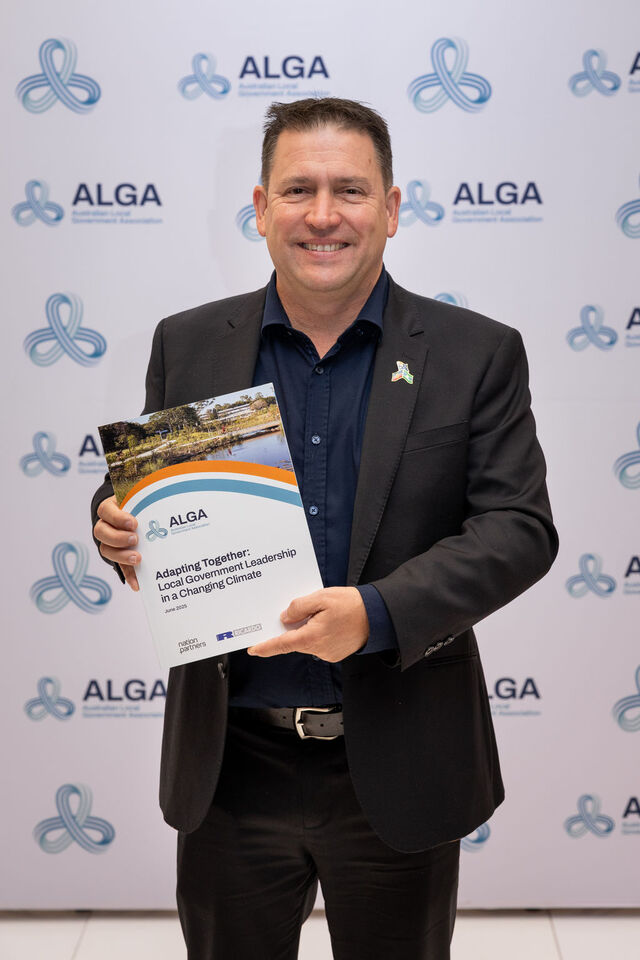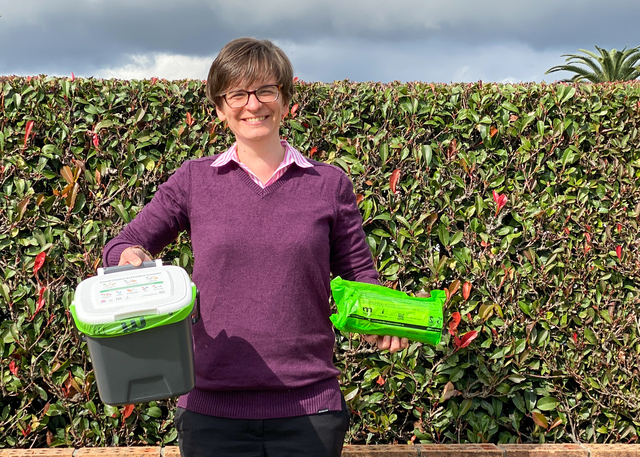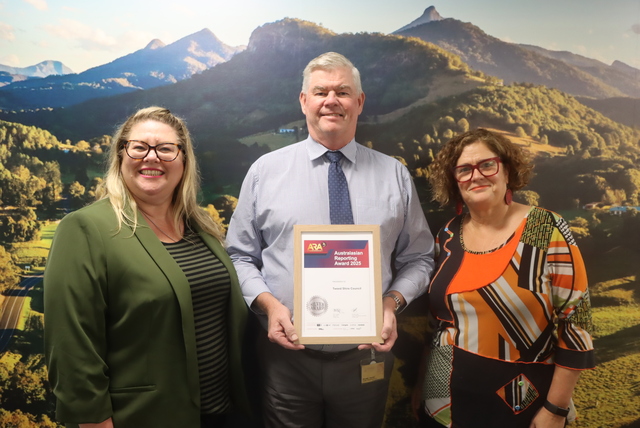A regular feature this month profiling two Councillors from South Australia
Councillor Rita Blieschke, Port Pirie Regional Council, South Australia
Q. How long have you been on Council?
Eight years.
Q. When and how did you first get involved in Local Government?
I retired as a School Principal in 1995 and decided to stand for Council. I had stood unsuccessfully about 25 years before, so I thought the time was right, hoping to give something back to the community which had been pretty good to me.
Q. Tell us about yourself, your Council and your community.
Port Pirie Regional Council is a rural and urban community about 240 kilometres north of Adelaide on the Spencer Gulf. Port Pirie is an industrial city with the largest lead smelter in the southern hemisphere and a population of 14,000. The rural area has four townships: Crystal Brook, Redhill, Koolunga and Napperby, with combined populations of about 4,000. This is a farming area with mixed farms of wheat, barley, sheep and cattle. The city has been established for about 120 years and has strong links to Broken Hill. It is a regional centre for services such as health, police, education and business. It has a strong history in road, rail and sea, although the harbour is a tidal creek. It is also within a short distance of the southern Flinders Ranges, which are unique. The area has been a thriving city and region for many years, however in recent years there has been a downturn in the economy due to the downsizing of industry (BHAS Pasminco). Currently the region is awaiting confirmation of a magnesium smelting plant, which would boost the flagging economy considerably.
Pirie is known as the Friendly City. It is a generous community in its support of many organisations. This was very evident recently when 400-500 people walked continuously for 20 hours in a Relay for Life, to raise about $100,000 for Cancer research. Council comprises an elected mayor and 12 councillors, nine men and three women.
I was born in Scotland and migrated to Australia in 1958. I started teaching in Port Pirie in 1960 and met my husband Ken and have stayed here since. I taught in three Port Pirie schools then became an area consultant for the education needs of about half of South Australia, mainly in inclusive education and issues of social justice and for girls. I then became a Principal until my retirement.
Q. During your time on Council, how have you seen your Council evolve?
We have gone from a City Council to a Regional Council, having amalgamated with two rural councils, Pirie District and Crystal Brook. Vast changes have also evolved through the new Local Government Act, which now ensures planning, consultation, governance and much more accountability for Councils.
Q. What are some of the challenges you’ve faced in Local Government?
The amalgamation has been a great challenge, as we have had to consider issues of distance and differing services for rural and urban communities. The role of Councils has also gone beyond the traditional roads, rates and rubbish issues to transport, aged and youth services, tackling unemployment issues, tourism, economic development and many others that are impacting strongly on rural areas.
Q. What are some important issues to you?
Tourism – in a depressed economic area such as ours, it is important that Council works with the community, businesses and the Regional Economic Development Board to plan tourism activities. The southern Flinders Ranges, combined with the history of our towns, could offer visitors interesting and enjoyable stays, thus boosting our economy with job creation. Other important issues are in the social justice area: an aging population requiring housing; increased health services and improved transport; disability access and youth services.
Q. What are the key aspects of being a good Councillor?
Councillors have to be flexible, with an ability to plan and be visionary – to see the big picture while still working at ground level – and be accessible to the ratepayers.
Q. How do you foresee the future of Local Government in Australia?
Local Governments should be an extremely strong force in Australia as we have the knowledge of the needs of our areas. We are still struggling with Constitutional recognition at State and Federal levels. However, changes are taking place rapidly and initiatives from both State and Australian Local Government Associations with regards to partnerships and better funding are beginning to progress.
Q. What qualities can young people offer Local Government?
This is an issue dear to my heart. It is often said that youth is our future, however, they are also our present. Modern youth are extremely knowledgeable, articulate and have strong ideas about the future. If we can harness this through representation on Councils and supported advisory groups, all Councils could benefit greatly, especially in strategic planning. Their ideas must be taken seriously and acted upon, within the constraints of budgets. They have vitality, energy, ideas, vision and confidence plus skills in many areas which would be an asset to any organisation.
Councillor Vin Brown, City of Marion, South Australia
Q. How long have you been on Council?
I was first elected in 1989 and am the longest continuously serving member on the Council.
Q. Where and how did you first get involved in Local Government?
In the 1980s I was President of the local Residents Association and we had an issue with Council over an appropriate place for a dog park and clubhouse. The site selected we considered wrong and we wanted to combine it with some other clubs. After a successful public meeting attended by almost 700 people it was suggested I run for office, and I’ve been there ever since.
Q. Tell us about your Council and your community. What major and unique issues face the Council?
The City of Marion is the most complex local authority in South Australia, possibly in Australia. It has 30 per cent of the State’s retail trade, more than 30 per cent of its heavy industry, a large and aging Housing Trust dwelling component, infrastructure that in many cases is over 40 years old, and rapidly rising property values. We have significant natural heritage areas: where I live has a notable stand of the oldest river red gums on the Adelaide Plains, surrounded by housing. We also have a very desirable lifestyle. Our wetlands projects have won awards, as has our Cultural Centre. The most modern racetrack in Australia, Morphettville, is in my ward. The boundary of that ward is only a few minutes walk from the famous Glenelg beach. We are engaged in a $60 million public/private revamp of a southern shopping centre to extend our community facilities. The City is crossed by some of the busiest arterial roads in the State. We have to balance this with the needs of the existing 80,000 residents – not the most simple of tasks at times.
Q. During your time on Council, how have you seen your Council evolve?
There is much more emphasis on Councillors doing the background work on the subjects at hand; and these are much more far reaching in the sense that core business such as Waste Management, or Storm Water Disposal, now has to be handled in a holistic manner. Planning is not about an individual house or street any more, and economic development is a major issue which a Council is in an unique position to deal with. Not all Councillors, or for that matter all residents, fully understand that.
Q. What are some of the challenges you’ve faced in Local Government?
When I was first elected there was an almost medieval attitude towards Councillors by senior staff and other elements of Local Government. If you were wealthy you were important; if you were retired it was a hobby; if you wanted change, you were treated with near contempt. When I first raised the issue of the miserable allowances paid to SA Councillors I was booed at meetings and publicly pilloried. In the following years I turned all that around. Conditions and allowances are now part of LGA policy. There is still a fair way to go but I am committed to a more equitable arrangement.
Q. What are some important issues to you?
Raising the public awareness of how hard we do actually work, and how important we are in the daily lives of almost everyone is important to me. We are too often dismissed as hobbyists or ‘sandpit senators’ until something goes wrong, and whether it is our responsibility or not, we are expected to do something about it – whether we have the resources or not. Because we are elected in the same way as State or Federal members, we should at least have similar support. Constitutional recognition would be a big step down that path.
Q. What are the key aspects of being a good Councillor?
A good Councillor should have a reasonable degree of education or training to keep up with complex issues, and the Local Authority should provide it if he or she can’t, because the residents will benefit from that increased knowledge and competence. Good communication skills are vital because that Councillor is often out there alone. Above all there has to be a vision of where the Municipality wants to be in ten years time. The last person listened to is not always right.
Q. How do you foresee the future of Local Government in Australia?
We already run or manage 90 per cent of the infrastructure, the sporting facilities, the environmental programs and the libraries, not to say the significant role we have in economic sustainability and development. We are not going to go away and it is only going to get tougher, so we cannot afford to be seen as a junior partner. We are a major force that has to get rid of its ‘do-good’ image to benefit Australian society as a whole.
Q. What qualities can young people offer Local Government?
Hope, enthusiasm, and a degree of energetic rashness. I am a high school teacher by profession, so obviously youth are the future of the country but not the only answer to some of the inertia in local politics.







